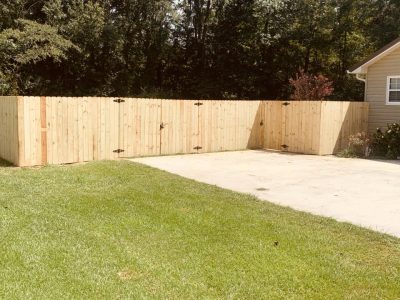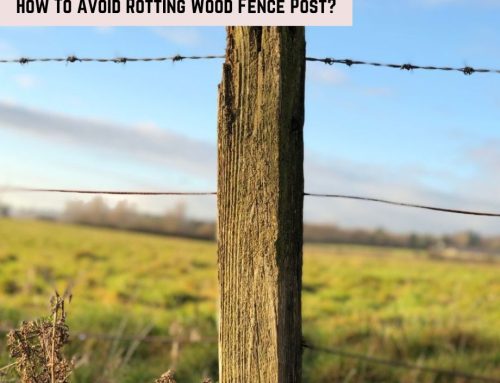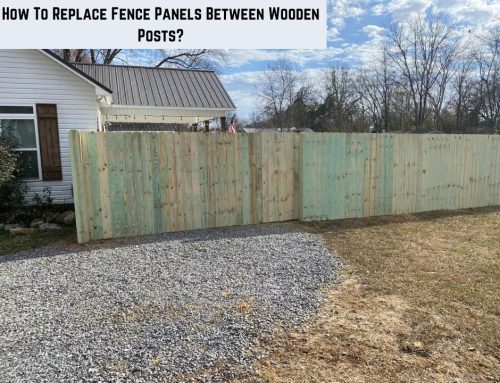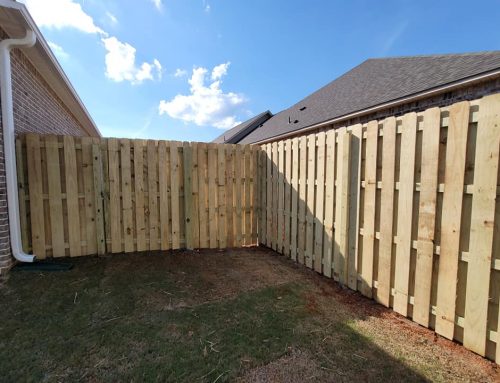Should You Repair Or Replace Your Wooden Fence?
What if you could save hundreds of dollars by making the right choice? According to data, a well-maintained fence can last up to 20 years.
But deciding between repairing or replacing your wooden fence depends on its condition. If damage is minor (peeling paint, old stain) and localized, repair is a good option. But if multiple sections are weak, it might be time for a new fence.
Stick around to learn when a quick fix is enough and when it’s smarter to start fresh. We’ll give you the facts to make a wise and cost-effective decision.
What to Consider: Repair or Replace Your Wooden Fence?
Deciding to repair or replace your wooden fence is not always a clear-cut choice. First, assess the fence’s condition and other variables. Keep reading to learn the key factors that will guide your decision. We’ll help you choose wisely.
Age Of The Fence
The age of your fence is a big factor. Older fences may have more wear and tear. This can make repairs less effective. A fence that’s over 10 years old might need replacing. A newer fence may just need minor fixes. Knowing the age helps you weigh repair against replacement. Make the right choice, and you save both time and money.
Extent Of The Damage
The extent of the damage is important. Small issues like loose boards are easy to fix. A repair job could be all you need. But what if you see rot, warping, or termite damage? These problems are severe. They often affect the fence’s structure. In such cases, replacement might be the smarter choice. This ensures you’re not just covering up bigger issues.
Ignoring major damage can lead to safety risks and higher costs later. So, evaluate the damage carefully. Then, decide if it’s time for repairs or a full replacement.
Material Quality
Material quality matters a lot. High-quality wood lasts longer. It can handle minor repairs easily. Low-quality wood is different. It may not hold up well, even with fixes. So, check the type of wood used for your fence.
Hardwoods like oak or cedar are durable. They often just need repairs. Softwoods may not last as long. They may require replacement sooner. Knowing the wood type can help you make a wise decision. It affects the cost and lifespan of your fence. High-quality materials may cost more now but save you money in the long run.

When to Repair Your Wooden Fence?
Keep reading to learn how to identify signs that your fence needs a repair and not a full replacement.
Minor Damage and Wear
When should you repair your wooden fence for minor damage and wear? Here are some issues to look for:
- Loose Boards: A single loose board is easy to fix. Just secure it back with screws.
- Chipped Paint: This is more about looks. A fresh coat of paint can do the trick.
- Small Cracks: Fill them with wood filler and sand smooth.
- Slight Sagging: A sagging gate can often be set right with new hinges.
Minor issues like these don’t call for a full fence replacement. A few quick fixes can make your fence as good as new. Repairing these problems early can save you money in the long run.
Isolated Sections Needing Attention
When should you repair your fence for isolated sections needing attention? Here are some signs:
- Rotten Posts: One or two rotten posts can be replaced. This avoids a total fence overhaul.
- Missing Pickets: A missing picket or two is a quick fix. Just nail in a new one.
- Broken Latch: A latch issue is a safety concern. Replace it to keep your yard secure.
- Warped Boards: Isolated warped boards can be switched out. This keeps the fence line straight.
If only specific sections of your fence show wear or damage, repair is often best. Address these small issues now. It will save you from more costly repairs later.
Cost-Effective Fixes
Cost matters in fence repair. Some fixes are cost-effective. Here are key points:
- New Nails: Loose nails are common. Hammering them back saves money.
- Paint: A paint job can add years to your fence. It’s cheaper than a new fence.
- Patching Holes: Small holes can be filled. This restores strength to the fence.
- Tightening Bolts: Over time, bolts can loosen. Tightening them is an easy fix.
When to Replace Your Wooden Fence?
When is it time to replace your wooden fence? If repairs are frequent and costly, it’s a sign. Replacement might be the better, long-term choice. Keep reading to learn the key indicators that it’s time for a new fence.
Extensive Damage or Rot
When should you replace your wooden fence? Extensive damage or rot is a major clue. Here are some clear signs to watch out for:
- Widespread Rot: If more than 20% of fence boards show rot, consider replacing the whole fence.
- Structural Issues: Problems like leaning posts or sagging gates are signs of bigger issues.
- Holes and Cracks: Large holes and cracks weaken the fence. They compromise security and privacy.
- Missing Boards: If multiple boards are missing or broken, a simple repair may not be enough.
In cases like these, repair might be a waste of time and money. A new fence can be a smarter investment.
Age and Structural Integrity
You should think about replacing your wooden fence when age and structural integrity are key concerns. Here’s what to look for:
- Longevity: Most wooden fences last about 15 to 20 years. After that, issues are likely.
- Warping: Old age can cause boards to warp. This affects the fence’s stability.
- Loose Posts: As fences age, posts may become loose or start to lean. This weakens the entire structure.
- Fading: Over time, the color fades. While this is cosmetic, it can be a sign of the wood aging.
If these issues are widespread, a new fence is probably your best option. Repair won’t be cost-effective.
Long-Term Savings and Durability
When is it better to replace your wooden fence for long-term savings and durability? Here’s what to consider:
- Frequent Repairs: If you’re constantly fixing your fence, the cost adds up. A new fence could save money long-term.
- Material Upgrades: New fences can be made from durable materials. This means less upkeep.
- Energy: Old fences may require more time and effort to maintain. A new one might save you labor.
- Home Value: A sturdy, new fence can boost your property’s worth.
Can You Replace Fence Panels Between Wooden Posts Instead of Replacing the Entire Fence?
Replacing fence panels between wooden posts instead of replacing the entire fence is a cost-effective solution for upgrading fence panels. It allows you to refresh the appearance of your fence without investing in a complete overhaul. By simply swapping out damaged or worn-out panels, you can achieve a fresh and improved look without the hassle and expense of replacing the entire fence.
Can I Stain a New Fence Before Repairing or Replacing It?
Before repairing or replacing a new fence, it’s possible to stain it. However, to ensure a seamless finish, it’s best to follow some tips for staining a newly installed fence. Clean the surface thoroughly, allowing it to dry completely before applying the stain. Use a stain that suits the wood type, and consider weather conditions for optimal results. Remember, proper preparation is key to achieving a stunning stained fence.
Final Words
Choosing between repairing or replacing your wooden fence depends on several factors. These include the age of the fence, extent of damage, and material quality.
Small fixes can extend the life of your fence, while frequent, major issues may require a complete replacement. Evaluate these key points carefully to make a cost-effective and long-lasting decision for your property.





